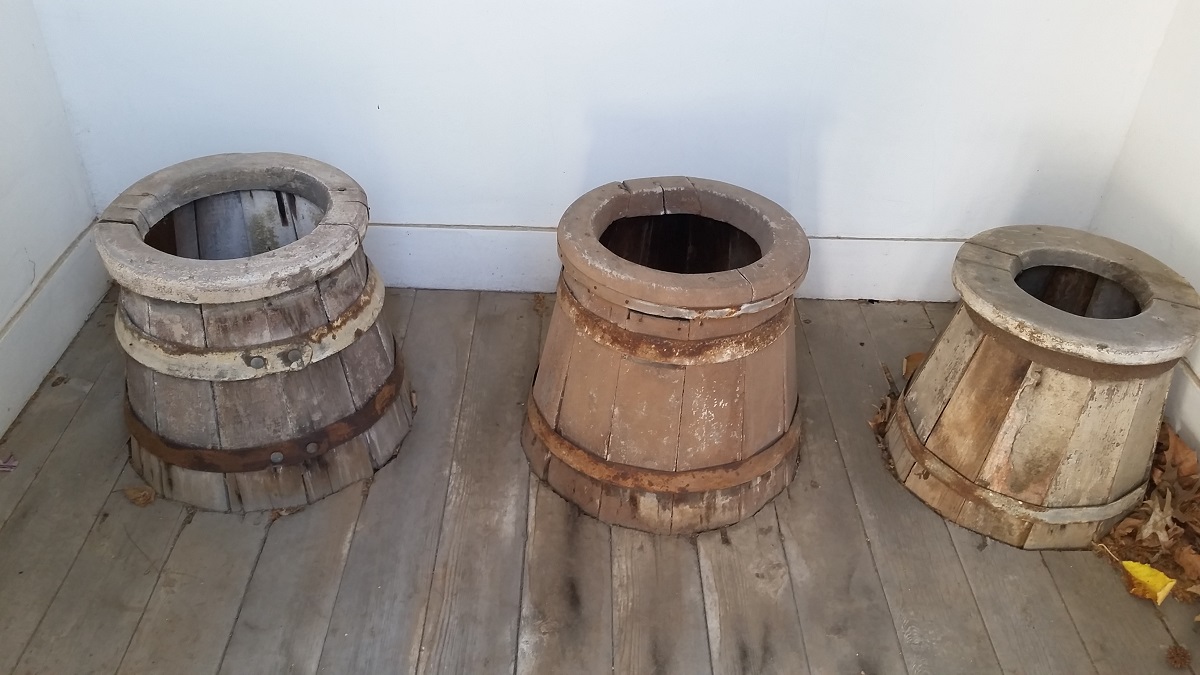(Today’s guest post comes from Joseph Hogue, who is a reader of my blog and a retired economist. He now spends his time with his four websites teaching people about the wonderful world of finance. He presents some different ways to look at investing during your retired years.)
These three investing strategies will help make sure your portfolio changes with your needs and your money is there when you need it.
One of the least discussed concepts in investing and meeting your financial goals is that your strategy will change as you get older.
Dr. Fawcett experienced that when he had to make the decision whether to sell a commercial property held in a partnership. It had been a great investment but his needs had changed and it was time to shift his portfolio.
As we get older, our needs shift from return to asset protection and risk management so the money is there when you need it.
That shift in needs is never more obvious than it is while investing during retirement. You need maximum protection from the ups-and-downs of the market but the sad fact that most haven’t saved enough means you may also need to continue growing your nest egg while spending it down.
That can be a dangerous balance for many investors. The temptation to chase returns can lead to an over-reliance on stocks and leave you exposed to a market meltdown.
Conversely, being too conservative may mean spending through your money too quickly and falling into the poverty you worked your life to avoid.
Fortunately, there are three strategies I’ve found over more than a decade as an investment analyst and in wealth management. These three strategies can help you find that perfect mix of risk and return while providing that needed cash flow in retirement.
The Bucket Approach to Retirement Investing
The bucket approach generally provides for the highest return among retirement investing strategies but can also mean more risk.
The idea is that you separate your savings into three accounts, three buckets that each invest in different assets.
- The first bucket is an account invested exclusively in ultra-liquid and safe money market funds or high-quality, short-term bonds. The money from this bucket provides for all your living expenses so it’s important that it be something you can sell regularly without fear of market losses.
- The second bucket is invested in short-term bonds with maturities of between two- to five-years. Bond funds can work as well but they need to be diversified funds with a minimum of risk. The money from this bucket is used to refill your first bucket each year.
- The final bucket is invested in a relatively riskier assets like stocks, real estate and other yielding-investments. The assets in this bucket are meant to produce a return that will keep your nest egg growing and refill the second bucket every few years.
Your spending bucket should have around 18 to 24 months’ of living expenses from which to draw on monthly. The second bucket generally holds between three to five years’ worth of living expenses. Take enough out of the second bucket each year to refill the first bucket, investing the proceeds in those safe money-market funds that will guarantee you have enough to live on.
The assets in your spending bucket may not keep up with inflation but you never have more than a couple years’ worth of expenses there anyway. The second bucket earns slightly more, maybe two to four percent above inflation, but is still safe enough to reliably refill your spending bucket.
It’s the third bucket where all your growth comes. Since you’ve got four to six years’ worth of expenses in the other two buckets, you can invest in riskier assets that will earn a solid return. During the years of good market returns, take money out of your growth bucket to refill the second bucket.
In years the market crumbles, you can afford to spend down your second bucket and let your growth bucket recover before selling stocks.
The bucket approach still involves some risk of a prolonged market meltdown but you’ll have several years of spending down your first two buckets without stressing out over values in your growth bucket.
Matching Your Investments and Expenses in Retirement
For those that want still less risk in their retirement investments, matching your assets and expenses can feel like a huge burden has been lifted.
The matching strategy involves creating what’s called a bond ladder that completely covers your liabilities for at least five years into the future.
- Current year’s expenses are held in savings or money market funds to use as needed.
- Next year’s spending needs are held in bonds maturing at the end of the year.
- Each year’s spending needs from year three to five are held in bonds maturing at the beginning of that year.
- The rest of your assets are held in a portfolio of stocks, real estate and other investments. Each year that your bonds mature, buy a new year’s worth of bonds maturing in four years to cover year-five expenses.
Think of your bond investments as a ladder. Each year, you climb higher and add another rung of bonds to the top so you never run out of ladder to climb. In the event of a market collapse, you can wait a few years to buy additional years’ of bonds and wait for your stocks to recover.
The bond ladder will generally offer a lower return than the bucket approach because the bond ‘rungs’ are generally invested in safer, lower-yielding investments. The strategy involves less risk though because you are matching your expenses out exactly for five or more years.
Investing in another Income Source
While it may not be investing in the traditional sense, there’s still one more strategy you might consider for your assets during retirement.
You can earn up to $17,040 annually (2018) in retirement without it affecting social security benefits. That extra $1,420 a month can go a long way and there are income sources that feel less like work than you may expect.
You only need to look around the net a few minutes to find there’s a blog for every hobby or passion project…and I guarantee you can make money on it.
Besides starting a blog to make extra cash, other income sources like self-publishing or online tutoring can make hundreds a week on less than five hours. Some start generating cash immediately while others may take up to a year to start making money but all can be used to supplement your retirement income.
You’ve worked for decades to grow your nest egg and secure the retirement you deserve. That’s meant investing for growth and a strategy that provides return on your money. In retirement, your needs change to protecting that money but still growing it to keep up with inflation and spending needs. Make sure your portfolio changes along with those evolving needs.
Have you used any of these strategies for investing? If so, how have they worked for you?
Joseph Hogue worked as an equity analyst and an economist before realizing being rich is no substitute for being happy. He now runs four websites and a YouTube channel on beating debt, making more money and making your money work for you. A veteran of the Marine Corps, he now makes more money than he ever did at a 9-to-5 job and loves building his work from home business.


I take a different view of the management of risk with respect to investing. I am now in “semi-retirement”, 10 years before “full” social security eligibility. I still earn income from the practice of medicine. I also have started two businesses and purchased equity in a third. They all relate to one another. Because they are start-ups, my “semi-retirement” has me using the 72t tax code to supplement living expenses from a portion of my retirement assets.
I am an individual equity investor, with few exceptions. All of my equity is held within IRAs since rolling out my last corporate qualified plan. I define risk as the chance that one of my holdings will suffer permanent impairment in its ability to produce dividends or distributions. Since each equity was carefully chosen, both for business model AND for its ability to pay it’s owner NOW, I wouldn’t sell it unless it’s business prospects materially change or its management begin to do risky and ill-advised things with the business. I hold enough equities that one can suffer dramatic impairment and the entire portfolio will not suffer significantly in its cash flow generation. Two can fail and the portfolio can still produce increasing cash flow on a yearly basis. My conglomerate needs to produce cash every year, and more cash every year than the year before. Heretofore I have taken ALL of that cash and reinvested across the spectrum of the conglomerate. Now I will be taking a portion for living expenses and reinvesting what’s left. The key is to watch the cash flow, and the health of the businesses that produce that cash flow. Any time a business’s revenues fail to grow at a rate that free cash flow is threatened, that business is on a watch list. No correction of that trend and it is voted off the island, so to speak. With today’s incredible public-source data sets, monitoring this program takes no more than a few hours per quarter. When one is very careful on the buy side, there is rarely a reason to sell. I don’t need to worry about “buy low, sell high”. All I need to do is a prudent analysis at the front end and only sell if business fundamentals deteriorate over time. Like any other city, Rome wasn’t built in a day, so you can’t just turn a program like this on in a moment; you have to purchase each holding at a time when it’s valuation in relationship to its business prospects is favorable and you have to become adequately familiar with it’s business that you understand which metrics are reliable in taking the pulse of the business’s health. However, once you reach steady state, you can largely ignore what is going on with the remainder of the market, paying attention only to the extent that you need to have a bench of potential substitutes, in case one of your players on the field gets injured and needs to be rotated out.
Some people simply drive the car and allow others to do all the monitoring, servicing, decision-making on its value within your basket of assets. Others like to change the oil, check the tire pressure, decide when to upgrade a system, etc. This governs how one behaves towards retirement and assets to provide security in retirement. I view retirement purely as a time to start new ventures, not a time to stop producing and rely on past efforts to sustain our financial viability. My hobbies have become my new business ventures, include managing my retirement assets.
Nathan, Congratulations on your semi-retirement. I too am now using my retirement plans through the 72(t) rule. You do not need to wait until you are 59.5 years old to use your retirement. Here is a link to my article on using 72(t) to get your retirement money early.
https://financialsuccessmd.com/guide-to-taking-substantially-equal-periodic-payments-sepp-from-your-ira-before-age-59/
Best of luck on your new endeavors.
This is a good article! However, I tend to favor the model of James Cloonan of the American Association of Individual Investors, the notion of “Level 3” investing. This is quite simple and straightforward and is based on a better understanding of return/risk/volatility for the individual versus institutions. It can’t be explained well here, but is probably simpler than any method above. It also is likely to result in substantially better returns. If done passively with index funds it is exceedingly inexpensive to invest. I encourage people to give this method a look.
I read about the 3 bucket plan a few years ago and though it was the best option for me. Gasem has done several guest posts on my blog where he also has other alternatives to make sure you don’t run out of money in retirement. He called one the life boat strategy. Another view of his was listed in his sequence of return risks post in my blog.
I think the best thing that favors us not running out of money is the ability to adapt. No one is forcing you to take the same safe withdrawal rate each year. Even when the govt. forces us to make RMDs we don’t have to spend that money but instead reinvest it back in the market.
I have always liked the bucket approach. I’m not sure I specifically set things up that way. But I do have an emergency fund. And due to asset allocation and diversification principles, I have real estate, stocks, and bonds. I guess I could consider them “buckets” right? Are there fundamental things I would need to do or change in order to implement it if I wanted to? Or is it mainly just a different conceptual understanding/way of thinking about a more traditional asset allocation mix?
Also, do you have thoughts on how this works in a terrible crash and a long bear? What if it takes 17-26 years to fully recover a stock value? How would that be handled?
Finally, a question for Cory: What are your thoughts on this? Do you consider your approach as a “bucket” method or will you be changing anything?
Wealthy Doc, I would say my investments have been more like the bucket approach. I have my retirement accounts at 100% stock mutual funds for the future. (This bucket got some money moved to CDs to cover that amount I will have to withdraw for the next five years in the 72t program) My real estate which spins off more cash flow than I need for my expenses. Cash, which I use for living expenses and new investing. And some other investments which are businesses.